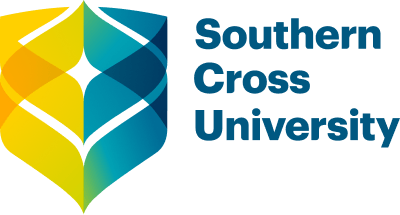Top research projects on the RISE at Environment, Science and Engineering postgrad conference
Categories
Share
PhD researcher Tiago Freire is investigating how industrial waste can be used as a remediation tool to clean up mining and radioactive waste materials, with the assistance of cutting-edge technology at Australia’s nuclear facilities.
Tiago is one of 28 PhD and Honours students presenting at the 2nd annual School of Environment, Science and Engineering Postgraduate Conference, known as RISE 2013 (Research in Science, Engineering and the Environment) being held at the Lismore campus this week (October 22 and 23).
He will present his research, 'Ear to the ground: Electroacoustics applied to chemistry and materials engineering’, at 10am on Tuesday October 22.
“The research is exciting because it is about creating zero waste through the re-use of industrial waste,” said the award-winning young researcher.
Tiago is a regular visitor to ANSTO’s nuclear research facility in Sydney and will soon undertake experiments at the Australian Synchrotron in Melbourne where he will use x-ray technology.
“The Synchrotron is an electron beam, a powerful light source, so we can look at the fine chemical structure and see what is happening to the contaminants during the binding process,” he said.
“By combining nuclear techniques at ANSTO with synchrotron technology we can learn how the modified waste is binding the contaminant, and how permanent that is.”
Tiago was named Best Presenter at the 17th Conference on Nuclear and Complementary Techniques of Analysis, and was invited speaker at the Australian Institute for Nuclear Science and Engineering Council Meetings in 2011 and 2013.
RISE special guest speaker is Dr Tim Payne, an environmental scientist at ANSTO, Australia’s nuclear research and development organisation.
Dr Payne said the country’s multimillion dollar nuclear facilities – including the OPAL nuclear reactor in Sydney and Melbourne’s Australian Synchrotron – offered young researchers opportunities to do cutting-edge science.
“Scientists around the world recognise that these buildings house the complex equipment, or ‘big toys’, that have helped bring Australian science into the 21st century.
“The new knowledge gained through neutron and synchrotron technology enables researchers to develop fundamental models of processes occurring in our world, which cover everything from the small - reactions of individual molecules – to the large - environmental processes that will influence the state of the planet earth from now into the distant future.”
Dr Payne is an adjunct Associate Professor with the School of Environment, Science and Engineering, and is currently working with the University’s staff and PhD students, including Tiago, on a number of research projects.
His presentation, ‘How Big Toys are helping Australian scientists get ahead with stunning models’, is at 4pm on Tuesday 22 October. Members of the wider community are welcome to attend this free event.
“I hope to inspire a younger generation of scientists to utilise these facilities to undertake world-class research that will help them build their careers and lay the groundwork for a strong influence of Australian science into the future,” Dr Payne said.
The RISE conference provides PhD and Honours students with the opportunity to share their research and hone their presentation skills, and brings together new researchers from across the various disciplines within the School, as well as the University’s Special Research Centres Southern Cross GeoScience and Southern Cross Plant Science.
The research community and the public are welcome to attend. RSVP at tiago.freire@scu.edu.au or 0432 564 182.
Photo: Dr Tim Payne.

/prod01/channel_8/media/scu-dep/current-students/images/Coffs-harbour_student-group_20220616_33-147kb.jpg)
/prod01/channel_8/media/scu-dep/current-students/services/counselling/images/RS21533_English-College-Student_20191210_DSC_6961-117kb.jpg)
/prod01/channel_8/media/scu-dep/study/scholarships/images/STEPHANIE-PORTO-108-2-169kb.jpg)
/prod01/channel_8/media/scu-dep/study/arts-and-humanities/images/RS20958_Chin-Yung-Pang-Andy_20190309__79I5562-960X540.jpg)
/prod01/channel_8/media/scu-dep/experience/images/SCU-INTNL-STUDY-GUIDE-280422-256-72kb.jpg)
/prod01/channel_8/media/dep-site-assets/component-library/screenshots/online-1X1.jpg)